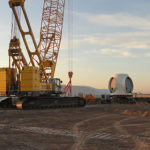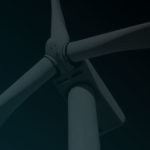The changes in wind energy resource assessment or energy yield analysis are significant over the last 10 years.
The situation 10 years ago was that such assessments were criticized by financial institutions as 8-10% below average, on average. This under-performance is near P90 net energy. The criticism was justified and the source of the under-performance was found to be related to 1) lower than expected availability (92-93% rather than contractual 96-97%), and 2) various wind resource assessment practices that were non-conservative, mainly in the gross-to-net losses arena, but also in wind flow modeling/complex terrain/meteorology and in other aspects such as measurement practices.
The essence of the changes to assessment practice over the last 10 years are as follows:
Availability:
Real turbine up-time (or availability) has increased approximately 4% across all major manufacturers; this varies by fleet and technology. John is a world-class turbine technologist.
Measurements:
Measurement techniques have improved, with improved anemometers, more comprehensive measurements, and taller met towers or the use of sodar/lidar which measure wind to 100+ meters. More measurements are now made of pressure, temperature, wind veer and stability, which affect assessment accuracy, especially in unique cases. The quality control software available today (e.g. “Windographer”) is more rigorous than it was 10 years ago.
Long-term Climate:
Adjustments to long-term climate have improved with the advent of advanced global meteorological data sets (the most prominent example is called “MERRA-2”). The advent of these long-term climate data sets has steadied global assessment practice where quality ground-based long-term meteorological measurements are not available.
Wind flow modeling:
Much more physically accurate (non-linear) wind flow models have emerged as computing power has increased. Atmospheric flows are non-linear. Computational fluid dynamics and mesoscale models are non-linear and are in more common use (in a recent poll at the AWEA wind energy resource assessment conference, now > 2/3 of such modeling). ArcVera’s mesoscale model is industry-leading with typically 1-3% mean absolute error, with a concomitant quantified increase accuracy and reduction in uncertainty. This approach improves results in almost all cases and is particularly important in complex terrain and complex meteorological projects. These changes represent major improvements over the use of the linear models that were most commonly employed 10 years ago.
Losses from gross energy:
Our company, like others, has investigated and made several increases in losses from gross energy. These changes include wake loss modeling that more carefully addresses site specific conditions including atmospheric stability, power curve inaccuracy/under-performance, various smaller losses (inclined flow, temperature curtailment), and site specific turbine performance losses (high turbulence, varying wind direction and wind veer, etc.). In all, losses from gross energy have increased 5-8% in the past 10 years.
Wake models:
Improvements such as adjustments for closely spaced turbines and deep arrays have entered the market over the past several years. ArcVera uses commercially-available and also a proprietary wake loss model that accounts for these effects, and the ArcVera model which accounts explicitly for atmospheric stability. Using multiple models (“ensemble modeling”) allows us to quantify wake loss uncertainty. Other wake loss models are starting to account for stability, and that is probably the next improvement that will come about from other consultants.
Power curves:
Through industry working groups and revised international standards, there is a better understanding of turbine performance, both among turbine vendors and among consultants, so power curves are more realistic now, and they are being applied with greater precision. Greater scrutiny of advertised power curves, and analysis tools to study them, are being applied.
Uncertainty:
Based upon performance data from operating projects, the methods for calculating uncertainty have been refined to be more precise. New and different categories of uncertainty have emerged. For example, climate change uncertainty is a relatively new category. Larger turbine rotor diameters, taller hub-heights and sophisticated turbine control systems have also caused changes in uncertainty calculations related to wakes, shear extrapolation, turbine performance, and energy sensitivity. Generally, the P99/P50 ratios are tighter than they were 10 years ago due to more certain wind flow modeling and, often, better measurement campaigns. So, while P50 values are generally more conservative than they were 10 years ago across the industry, P99 values are not necessarily any more conservative than they were 10 years ago, and the results are much more site specific.
In all, between the increase in turbine availability and more precise and conservative energy assessment practice, the under-performance bias of 10 years ago has been addressed. Will new projects under-perform despite these improvements? Yes. However, we believe the risk of under-performance is considerably lower now to to the bias-adjustments and technological advancements described above. Our internal assessments (prior and ongoing) and some independent assessments also show that this is the case.
Our approach is to apply constant scrutiny to our processes to ensure energy yield accuracy in the face of technological advancements, site-specific challenges, and industry change.




